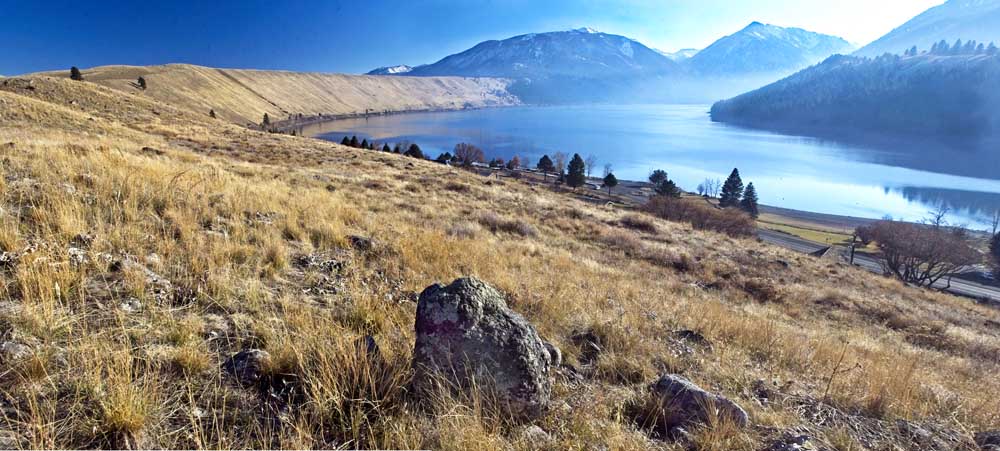VOC A Wallowa County community dream comes true
Published 6:00 am Monday, January 20, 2020

- In this shot from the top of the terminal moraine, the East Moraine stretches out like a long arm reaching for the mountains.
It’s been a rough week. The fire in Joseph Charter School’s gym has upended a school year, challenged Joseph’s winning sports teams in ways they never anticipated, and in the end, seems to be bringing out the best and most supportive in us and in our neighboring communities.
We are all proud of the way that the skilled and caring staff handled the emergency, the quick response and professionalism of emergency responders, and that the school is getting back on track for the year. One look at the gym’s blackened and charred weight room makes you realize that the fire could have been infinitely worse.
There was another change in the offing this week. This one has a totally positive impact for Wallowa County.
When the 21st century history of Wallowa County is written, Jan. 17, 2020 will be one of its most momentous dates. That’s when a long-time community dream came true: the East Moraine maintained as a natural working landscape for posterity. Publicly accessible and publicly owned. Producing sustainable natural resources. An educational laboratory for county schools. A cherished landscape that retains its beauty for residents and visitors alike to enjoy. There is still much work to do. This is an enormous and historic first step. But we have to keep going.
Bringing a community dream to fruition was neither easy nor a given. The East Moraine has been in private ownership for a century and a half. The landscape was initially kept open by 19th and early 20th century agricultural economics. The fertile soils on the backside of the East Moraine produced hay and grain, earning their status as open space. The moraine’s west slope, graveled, steep and rocky, was deemed unsuitable for farming or housing, but its bunchgrass supported cattle and horses. The top of the moraine sat about 900 feet above a water source, and did not lend itself to a residence, no matter how scenic.
But Wallowa Lake increasingly became a recreational mecca. Houses sprouted along the West Moraine’s forested shoreline. They took root on the terminal moraine close to Joseph. The concept of developing the East Moraine began to gel.
Development’s threat became more real in 2006. A proposed housing project on 62 acres of terminal moraine land sparked wide public and tribal concern and appeals to Oregon’s Land Use Board of Appeals (LUBA). With the help of the Wallowa Land Trust and the tribes of the Lapwai, Umatilla, and Colville Reservations, the land was acquired by the Oregon Parks and Recreation Department. In 2009, the 62 acres became the Iwetemlaykin State Heritage Site.
The looming threat of East Moraine development brought the question of what might happen to its extraordinary landscape into clear focus for the people of Wallowa County. In 2008, a meeting convened to discuss the Oregon State Park’s plan for Iwetemlaykin included a passionate discussion of the value of the entire moraine system, especially the East Moraine that rises steeply from the lake to the sky along the Wallowa Lake Highway.
“To me,” Wallowa County Commissioner Susan Roberts said, “that meeting was a coming-together of every part of the county — ranchers, loggers and everyone — of how important the moraine is to us all.”
In late 2018, the Yanke family, which owned 1,791 well-managed acres of the East Moraine, agreed to sell their land to Wallowa County for $6 million. The Wallowa Lake Moraines Partnership — Wallowa Land Trust, Wallowa Resources and the Nez Perce Tribe, in collaboration with Wallowa County — raised the money for the purchase. The effort was aided by a $1 million grant from Oregon State Parks, and $3.5 million from the Oregon Department of Forestry. Private foundations and private citizens provided the rest. The total raised to date is almost $6.5 million. Altogether, about 80% of the East Moraine is now under voluntary conservation easements or public ownership that preclude almost all development.
But to finally achieve the dream of a sustainable and publically accessible working landscape, more investment must be made. The Yanke family and the late Bruce Dunn have managed this property extraordinarily well. But to ensure its future sustainability and managed public access, Wallowa County and the Wallowa Lake Moraines Partnership will need an inventory of what’s there. Then they’ll need a plan to manage it, a manager, and infrastructure that may include designated trails for people, fencing to manage and rotate livestock, other management tools. As Wallowa Land Trust Executive Director Kathleen Ackley said, “We were thinking that $6 million would go for the actual purchase, and we’d put $500,000 into a trust fund for management. But as we have looked closer and closer at the property, we realize that it’s probably going to take a little more than that.”
We can all take pride in Wallowa County’s wonderful success in conserving this extraordinary natural feature and sustainable working landscape.
“If we were really just trying to improve the tax base here,” Roberts said, “we’d go all out on moraine development. But that’s not what the community wanted. They wanted the moraine.”
Now that we have it, we need to help the Wallowa Lake Moraines Partnership bring our dream to fruition. We are almost there. Let’s support the final steps to the moraine becoming a truly sustainable showcase for us all.








